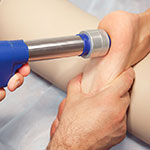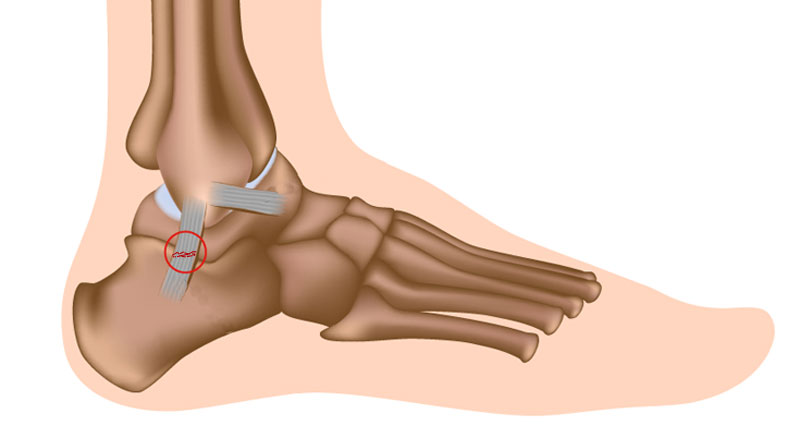Extracorporeal Shock Wave Therapy is a form of Electrotherapy which has shown to be beneficial in the treatment of tendon injuries such as Achilles Tendinopathy and Tennis Elbow, as well as Plantar Fasciitis.
What is Extracorporeal Shock Wave Therapy (ESWT)?

Extracorporeal Shock Wave Therapy is a method of therapeutic treatment for soft tissue injuries. It works by passing shock waves (short but intense energy waves) which travel faster than the speed of sound, into the tissues.
The form of treatment was originally developed to break down kidney stones and has been used in this way for the last 20 years. It was noticed that patients receiving this treatment also noticed a decrease in pain from other soft tissue injuries. The technology was then adapted to be suitable for use specifically on these areas.
What Injuries is it used for?
ESWT is most effective in treating conditions where major tendons connect to bones:
ESWT also encourage bone healing and so can be used for stress fractures.
When should it NOT be used?
In some cases, shock wave therapy is not suitable. Here are the most common examples:
- Application over open growth plates (where there may still be growth)
- Over metal pins or plates etc
- Malignant tumours
- Pregnancy
- Nerve and circulation disorders
- Infections.
How does ESWT Work?
Whilst the exact process is still up for debate, it is thought that ESWT works by causing microtrauma to the tissues which creates neovascularisation – an increase in new blood vessels. These bring an increase in blood flow to the area and therefore aid tissue healing. Beneficial effects may also be down to the stimulation of an acute inflammatory response in a chronic injury. This can effectively re-stimulate the healing process.
Extracorporeal Shock Wave Therapy can be either High-level or Low-level energy.
High-Level ESWT
- Applied in a single dose.
- Energy levels above 0.6 mJ/m.
- Can be painful.
- Used in conjunction with local aneasthetic.
Low-Level ESWT
- Requires multiple treatments.
- Energy levels below 0.08 mJ/m.
- Less painful – may be uncomfortable.
- Local anaesthetic not normally used.







